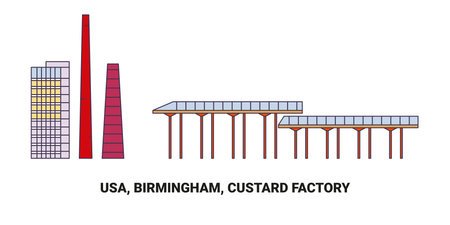Introduction: Maximising Space in British Gardens
For many homeowners and gardening enthusiasts across the UK, finding enough space to create a thriving garden can be quite the challenge. With average British gardens often being modest in size—especially in urban and suburban areas—making the most of every square foot becomes essential. Traditional planting methods can quickly exhaust available ground space, leaving gardeners searching for innovative ways to expand their growing capacity without encroaching further on precious lawn or patio. In response to these limitations, combining vertical structures with raised beds is emerging as an increasingly popular and practical solution. This method not only makes efficient use of limited space but also introduces new opportunities for creativity and productivity in even the smallest outdoor areas. By reimagining how we utilise height as well as ground area, British gardeners are discovering that a compact plot need not mean compromising on variety, yield, or visual appeal.
2. Advantages of Raised Beds in Compact Spaces
For British gardeners dealing with limited outdoor space, raised beds provide a practical and versatile solution. Their benefits become particularly apparent in small gardens common throughout the UK’s urban and suburban areas. By elevating the soil, raised beds address several challenges unique to compact spaces and Britain’s variable climate.
Improved Soil Quality
One of the principal advantages of raised beds is the ability to control soil composition. Many British gardens suffer from heavy clay or poorly draining soils. With raised beds, you can introduce a tailored mix—typically combining topsoil, compost, and grit—optimising drainage and fertility. This approach not only supports healthier root systems but also reduces issues like waterlogging after the frequent rain showers typical of British weather.
Ease of Maintenance
Compact gardens demand efficient use of time and effort. Raised beds bring the growing surface closer to waist height, reducing the need for bending and kneeling—a welcome relief for gardeners of all ages. The defined edges help keep pathways clear and prevent accidental trampling of plants. Weeding, watering, and harvesting are all simplified, making gardening more accessible even for those with limited mobility.
Suitability for British Weather Conditions
The unpredictable nature of British weather—ranging from persistent drizzle to occasional dry spells—necessitates flexibility in garden design. Raised beds warm up more quickly in spring compared to ground-level plots, giving your plants an earlier start. They also drain excess water faster during wet periods, minimising the risk of root rot.
Comparison Table: Raised Beds vs Traditional Ground Plots
| Feature | Raised Beds | Traditional Ground Plots |
|---|---|---|
| Soil Control | High – Customisable mix | Low – Limited by native soil |
| Drainage | Excellent – Reduced waterlogging | Variable – Often poor in clay soils |
| Ease of Access | Easy – Elevated height | Difficult – Requires bending/kneeling |
| Warming Speed (Spring) | Quick to warm up | Slower to warm up |
| Pest & Weed Control | Easier – Defined boundaries | Tougher – Open access for pests/weeds |
| Adaptability in Small Spaces | Highly adaptable | Limited by available ground area |
This combination of improved soil quality, easier maintenance, and adaptability to British weather makes raised beds a standout choice for anyone seeking to maximise productivity and enjoyment in a compact garden setting.

3. Incorporating Vertical Structures
In compact British gardens, the strategic use of vertical structures is a game-changer when paired with raised beds. These elements not only maximise limited space but also introduce visual interest and practical growing solutions. Trellises are a classic choice, especially for supporting climbing plants like sweet peas, runner beans, or clematis. Traditionally crafted from timber or metal, trellises can be fixed directly into raised beds or attached to fences, blending seamlessly with the quintessential British garden aesthetic.
Obelisks offer both structure and style. Their pyramid-like shapes create height and become focal points within small spaces. Gardeners often use obelisks to support roses or decorative gourds in raised beds, ensuring healthy vertical growth while saving precious ground area.
For gardens with solid walls or fences, wall-mounted planters present another clever solution. These planters are ideal for trailing herbs such as thyme and oregano, or colourful annuals like lobelia. They free up space within the raised beds for larger crops or shrubs while still adding layers of greenery to the garden scheme.
Popular UK examples include willow trellis panels—favoured for their rustic charm—and painted wooden obelisks that match the pastel tones of traditional British sheds. Modular wall planters, meanwhile, have become increasingly common in urban gardens where every inch counts. By thoughtfully combining these vertical supports with raised beds, gardeners can create abundant and visually appealing growing environments even in the smallest of British outdoor spaces.
4. Plant Selection for Vertical and Raised Bed Gardening
Choosing the right plants is crucial when designing a compact British garden that utilises both vertical structures and raised beds. The UK’s variable weather, often cool and damp, means it’s important to select species that not only thrive locally but also make the most of limited space. Below is a guide to recommended plant types—climbers, vegetables, and ornamentals—that perform well in these conditions and arrangements.
Climbers for Vertical Structures
Climbing plants are ideal for vertical gardening as they make use of upward space without crowding ground-level beds. In Britain, reliable climbers include:
| Plant | Key Features | Notes for British Gardens |
|---|---|---|
| Clematis | Long flowering season, diverse colours | Prefers partial shade, protect roots from harsh sun |
| Honeysuckle (Lonicera) | Fragrant, attracts pollinators | Tolerant of various soils, thrives in partial shade |
| Sweet Pea (Lathyrus odoratus) | Colourful, scented flowers | Sow after last frost for best results |
| Star Jasmine (Trachelospermum jasminoides) | Evergreen, highly fragrant summer blooms | Shelter from cold winds in colder regions |
Vegetables Suited for Raised Beds and Vertical Growth
Raised beds offer improved drainage and soil control—both advantages in wetter British climates. When combined with trellises or supports, they allow even more productive planting.
| Vegetable | Growth Habit | Cultural Notes for UK Gardens |
|---|---|---|
| Runner Beans | Climbing annual; needs support | Loves moist, rich soil; sow after risk of frost passes |
| Cucumbers (outdoor varieties) | Vining; can be trained upwards | Select robust cultivars like ‘Marketmore’ or ‘Burpless Tasty Green’ for outdoor success |
| Kale (‘Nero di Toscana’ or ‘Curly Kale’) | Bushy; fits well in deep raised beds | Tolerates cool weather; harvest from late autumn through winter |
| Lettuce (loose-leaf types) | Compact rosettes; suitable for succession planting in beds/vertical pockets | Grows best in spring and autumn; shade from midsummer heat if possible |
| Dwarf French Beans | Bush habit; suitable for smaller raised beds/containers | Sow late spring; keep well watered during dry spells |
Ornamentals That Work Well Vertically or in Beds
Aesthetic choices should complement productive planting while adding year-round interest. Consider these options:
| Ornamental Plant | Main Attributes | Cultural Advice |
|---|---|---|
| Pansies & Violas | Bedding plants, long flowering period | Tolerate cooler temperatures; ideal for edges or wall-mounted planters |
| Ivy (Hedera helix) | Evergreen climber or groundcover | Tough and adaptable; great for green walls but monitor growth to prevent invasiveness |
| Lavender (‘Hidcote’ or ‘Munstead’) | Aromatic foliage, attracts bees | Loves full sun and well-drained soil; perfect for raised bed borders |
| Nasturtium | Trailing or climbing annual; edible flowers/leaves | Sow direct after last frost; thrives even in poor soils |
Cultural Tips Specific to Compact British Gardens
- Select disease-resistant varieties where possible to minimise maintenance in close quarters.
- Consider microclimates—sheltered spots may allow tender climbers to survive milder winters.
- Diversify plant heights and textures to create visual interest and maximise light capture.
Conclusion: Right Plant, Right Place
A thoughtful mix of climbers, vegetables, and ornamental species will turn any compact British garden into a thriving space. By aligning plant selection with local conditions and utilising both vertical structures and raised beds effectively, gardeners can achieve abundant yields and year-round beauty—even within the smallest plots.
5. Practical Design Tips and Layout Ideas
Making the most of limited space is a hallmark of British gardening, especially in urban settings where gardens are often compact and overlooked by neighbours. Combining vertical structures with raised beds offers both functional and aesthetic benefits, but thoughtful planning is key. Here are some practical design tips tailored for small British gardens:
Maximising Sunlight
Begin by observing how sunlight moves across your garden throughout the day. Position taller vertical elements—like trellises, obelisks, or wall-mounted planters—on the northern or eastern boundaries to prevent them from casting excessive shade over your raised beds. Use climbing plants such as sweet peas or runner beans on these supports to create height without blocking too much light. If your garden is particularly shaded, consider painting fences or walls in light colours to reflect sunlight back onto your plants.
Enhancing Privacy
In densely built-up areas, privacy can be scarce. Strategic placement of vertical structures along shared boundaries can help screen out unwanted views while introducing greenery into your space. Opt for evergreen climbers like ivy or jasmine, which offer year-round coverage and soften hard lines. Modular trellis panels fixed atop raised beds can provide an extra layer of seclusion without feeling oppressive.
Creating Visual Interest
A successful small garden often relies on clever layering and focal points. Arrange raised beds at varying heights to draw the eye through the space—consider stacking sleepers or bricks for a tiered effect. Integrate arches, pergolas, or even recycled ladders as vertical accents to break up sightlines and add architectural interest. Mixing materials (such as timber, metal, and woven willow) helps evoke that charmingly eclectic British cottage style.
Layout Suggestions
For awkwardly shaped gardens—common in older British homes—think about using diagonal layouts or curved beds to maximise usable planting area and create an illusion of depth. Place smaller raised beds near seating areas for herbs and edibles within easy reach, while larger beds towards the back can host statement climbers or fruit trees trained vertically (espaliered apples are a classic choice). Don’t forget paths wide enough for comfortable movement, using gravel or reclaimed brick to stay in keeping with local character.
Practical Considerations
Remember to leave access points for maintenance: a minimum of 45cm between raised beds is ideal. Incorporate water butts and tool storage discreetly behind vertical screens or within bespoke bench seating. With careful design and layered planting, even the smallest British garden can feel private, lush, and delightfully individual—a real testament to making every inch count.
6. Seasonal Care and Maintenance
Ensuring the ongoing vitality of your raised beds and vertical structures in a compact British garden requires attentive, seasonally-adjusted care. The UK’s temperate climate, with its variable rainfall and occasional cold snaps, means soil health and moisture management must be at the forefront of your maintenance routine.
Soil Health: The Foundation for Success
Healthy soil is the backbone of productive raised beds and flourishing vertical plantings. Each autumn, top up your beds with well-rotted compost or locally-sourced manure to replenish nutrients lost during the growing season. In spring, lightly fork over the soil to aerate it and break up any compaction that may have occurred over winter—a crucial step for beds built on heavy clay, which is common in many British gardens.
Moisture Management: Coping with British Weather
The unpredictable British weather can mean periods of drought followed by sudden downpours. Raised beds dry out more quickly than ground-level borders, especially when combined with the increased exposure of vertical structures. Mulching is essential: apply a 5cm layer of bark chips or leaf mould in early spring to retain moisture and suppress weeds. During dry spells, water deeply at the base of plants in the morning or evening to minimise evaporation. Consider installing simple drip irrigation systems if you travel frequently or face hosepipe bans during summer heatwaves.
Seasonal Tasks: A Month-by-Month Approach
Spring
Check trellises, supports, and fixings for damage from winter storms—repair promptly to ensure stability as plants begin their rapid growth. Sow hardy crops like peas or lettuce directly into raised beds and train climbing varieties onto vertical frames.
Summer
Prune back excessive growth on climbers to encourage airflow and prevent disease. Regularly deadhead flowering plants on walls or arches to prolong blooming. Monitor for pests such as aphids or slugs; use environmentally-friendly controls suited to wildlife-friendly British gardens.
Autumn
Remove annual crops and add them to your compost heap, but leave perennial roots undisturbed where possible. Plant overwintering onions or broad beans in raised beds if space allows. Clean and store removable vertical structures to extend their lifespan.
Winter
Protect tender perennials on vertical supports with horticultural fleece if frost threatens. Use this quieter period to plan next year’s layout and order seeds from reputable British suppliers, ensuring you select varieties proven to thrive in local conditions.
Conclusion: Adaptation is Key
Caring for raised beds and vertical structures in a compact British garden is all about adaptation—responding thoughtfully to each season’s unique challenges while prioritising healthy soil and careful watering. With these practices embedded into your gardening calendar, you’ll enjoy a productive and beautiful space year-round.
7. Conclusion: Transforming Small Gardens with Vertical Solutions
In summary, integrating vertical structures with raised beds offers a practical and visually appealing way to maximise the potential of compact British gardens. By utilising fences, trellises, wall planters, or even bespoke pergolas alongside well-constructed raised beds, you can significantly increase your growing space without encroaching on precious ground area. This approach not only enhances productivity—particularly for climbers, trailing plants, and herbs—but also brings height, texture, and a sense of enclosure to your garden design.
Embracing these methods encourages creativity and experimentation. Whether you are working with a modest urban courtyard or a narrow terraced plot, combining vertical gardening with raised beds allows for flexible planting schemes that can be tailored to the UK’s variable weather conditions and local microclimates. The result is a more resilient, manageable, and beautiful garden space that reflects your personality and meets your practical needs.
If you’re new to this approach, start small—perhaps by adding a simple trellis above an existing bed or trialling hanging pots on a sunny fence. Observe how different plants respond and gradually expand your vertical installations as confidence grows. Remember, every British garden—regardless of size—has untapped potential waiting to be revealed through thoughtful design and a willingness to experiment.
Ultimately, the combination of vertical structures with raised beds offers a sustainable solution for making the most of limited outdoor space. With patience, curiosity, and a dash of ingenuity, you can transform even the smallest UK garden into a lush, productive retreat that flourishes throughout the seasons.


